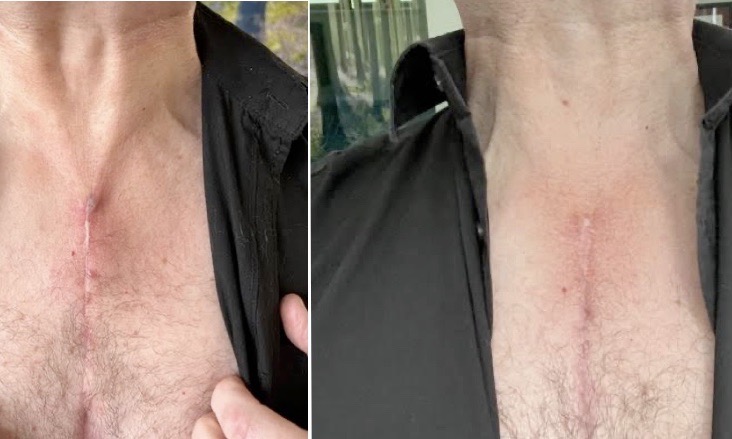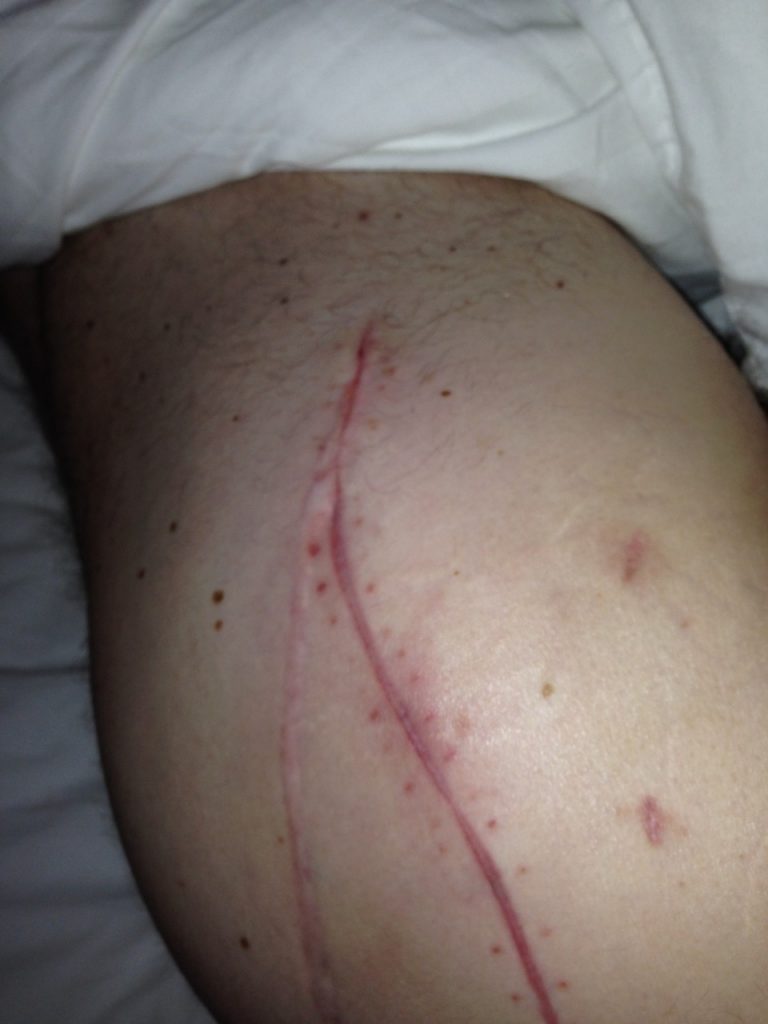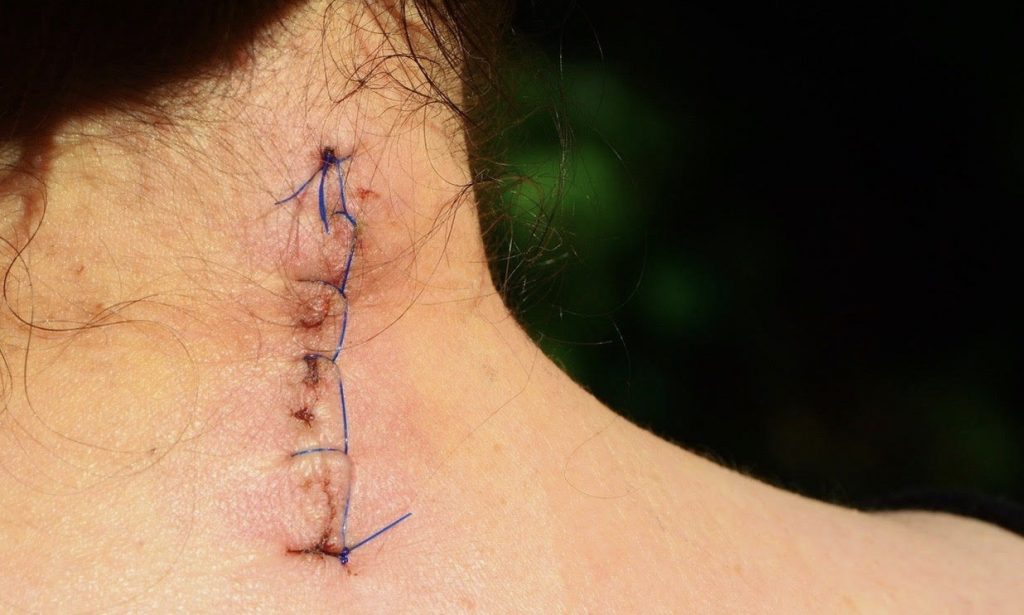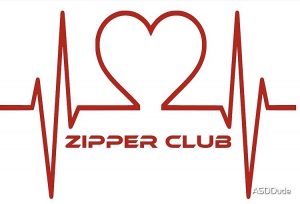Scar Tissue Massage
Scar Tissue Massage and treatment therapy. Treating scar tissue can be an important part of healing after surgery or an injury. They can be painful and alter how the local structures work causing restricted movement and pain. Although you cannot control how your body will scar, there are things you can do when it comes to breaking up the tissue and adhesions. As well as getting professional help, you can also play a role in healing your scar by breaking up the adhesions and raised and painful areas, with massage and treatment.
What is a scar?
A scar is a mark left on your skin after surgery or an injury and is formed during the healing process. As the body heals, it produces collagen fibres to close and heal a wound. These collagen fibres do not grow in the same direction, and may be discoloured and have an uneven texture. A scab forms over the wound to protect the area from infection. Once healed, the scab will fall off and your newly formed scar will be left. This may be uncomfortable and cause other problems.
Benefits of Scar Tissue Massage.
Scar tissue massage has many benefits, especially when done professionally and self-administered under guidance. It can help scar tissue build-up which can make muscles and joints stiff. Increases range of movement and the scar’s flexibility, making movements feel less restrictive and “tight”. Helps improve blood flow, which promotes healing and the scar’s pliability and drains excess fluid and swelling. This has a very positive local effect, especially in sensitive areas of the body such as the chest, neck abdomen, and pelvic area. It helps improve the appearance of your scar making you feel less self-conscious. Helps regain feeling in the area and decreases numbness, tingling, and localised soreness.
Scar Tissue Massage
Scar tissue massage and treating scar tissue can be an important part of healing after surgery or an injury. They can be painful and alter how the local structures work causing restricted movement and pain. Although you cannot control how your body will scar, there are things you can do when it comes to breaking up the tissue and adhesions. As well as getting professional help, you can also play a role in healing your scar by breaking up the adhesions and raised and painful areas, with massage and treatment.
What is a scar?
A scar is a mark left on your skin after surgery or an injury and is formed during the healing process. As the body heals, it produces collagen fibres to close and heal a wound. These collagen fibres do not grow in the same direction, and may be discoloured and have an uneven texture. A scab forms over the wound to protect the area from infection. Once healed, the scab will fall off and your newly formed scar will be left. This may be uncomfortable and cause other problems.

Before and after treatment of open heart surgery scar

Hip revision scar after hip replacement
When to treat?
Before you start massaging your scar or enlisting a professional to perform scar tissue massage, your scar has to be in a good place. You should not massage until your incision has fully healed and is a scar (not just a wound or scab). If you massage your scar prematurely you could cause it to reopen or tear, leading to an infection.
Generally, it is best to wait at least 2 weeks after a surgery or injury. You must always clean your hands and the local area to be treated may also be cleansed before treatment is administered if needed. Massaging scar tissue is most effective in the first 2 years while the scar is still forming and healing. However, scars may be treated at any time but may be less effective over time.
Effective self-treatment
Here’s how we recommend you massage your scar tissue at home:
-
In early healing phases, try to massage your scar for 2-3 minutes a day (2-3 times a day).
-
Apply a non-perfumed Vitamin E lotion or oil to your scar area. This is proven to help build collagen and massaging with lotion lubricates the skin, cutting down friction.
-
Using the pad of your thumb or finger, gently but firmly massage in a circular motion. It should feel pressure but it should not be painful.
-
Next, stretch the skin towards the line of your scar and repeat your massaging with a firm circular motion using your thumb or finger.
-
With pressure, slowly slide your finger up the line of the scar while apply pressure. Change direction by slowly sliding down.
-
Repeat the process several times for 2-3 minutes or so.
Some interesting facts
The structural properties of scars are different from regular skin. Scar tissue does not generally contain melanin (responsible for skin pigmentation). They don’t tan but can burn as they are susceptible to UV light and get sunburned. Always use sunscreen on your scar! Very occasionally scar tissue may need to be removed surgically. This has obvious complications and must only be considered after specialist consultation.


Steve Palmer has a very special interest in treating scar tissue. He has had substantive previous surgery and is a CABG3 survivor.
Steve is also a member of the Zipper Club.

OPEN HEART SURGERY SURVIVORS GROUP.
LINKS – BRITSIH SKIN FOUNDATION

